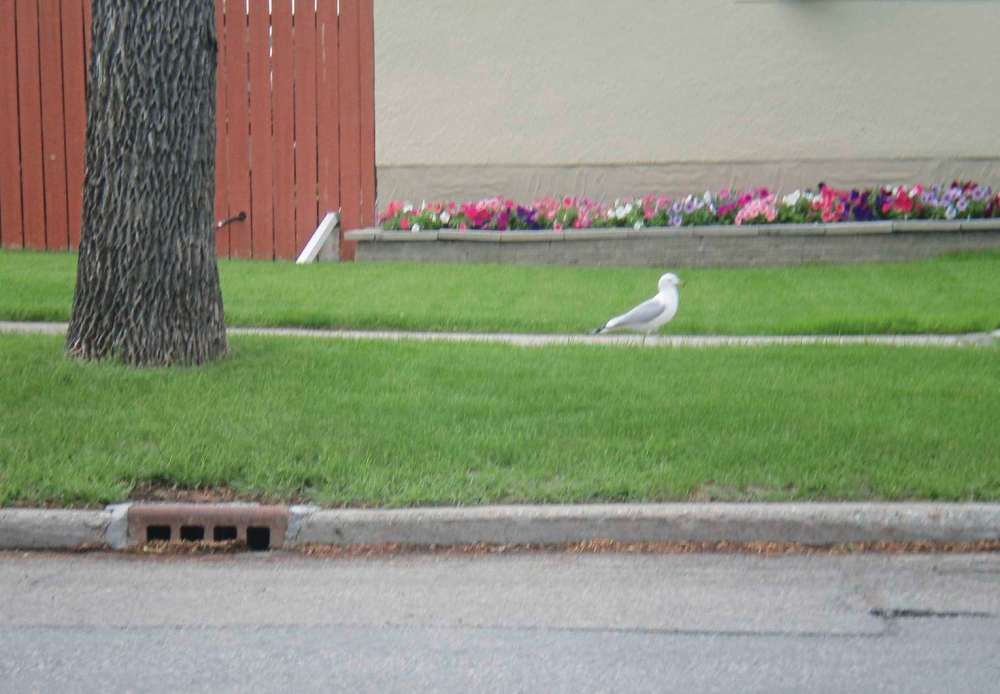Creepy crawlies are caterpillars, not worms
Advertisement
Hey there, time traveller!
This article was published 10/07/2020 (1966 days ago), so information in it may no longer be current.
It is like Cirque du Soleil out there in Fort Rouge, with all these trapeze artists swinging on their tiny threads.
There are a lot of caterpillars hanging around in Winnipeg. I relocated my two outdoor chairs from the elm tree to the spruce instead. I take a look at the lawn chair before I sit in it, and I have to scan my shoulders from time to time.
I have found some of these crawly creatures on me when I go inside. I am one of those who gently pick them off and toss them onto some outdoor green growth. I do sometimes scream when an unexpected caterpillar appearance surprises me.

At the moment, three kinds of caterpillars have infested our city — cankerworms, elm spanworms and forest tent caterpillars. Richard Westwood, chair of environmental studies and sciences at the University of Winnipeg said that cankerworms, elm spanworms and forest tent caterpillars are all caterpillars and that they belong to the Lepidoptera family, an order of insects that includes butterflies and moths.
Winnipeg’s forest tent caterpillars have actually declined in numbers in the last three to four years. Disease and natural predators such as birds, gulls and parasitic wasps kill off some of the caterpillars in our environment.
The forest tent caterpillar is fuzzy and hairy with blue diamond-shaped designs on its black back. This caterpillar is almost twice the size of a cankerworm and can be found wherever there are trees.
While here, the forest tent caterpillars spin a web and climb to places in our eaves where they build waterproof, fuzzy cocoons. Ten days to two weeks later the caterpillars enter the pupae stage where they metamorphose or transform into brown moths. Then the short-lived moths lay eggs to be hatched next year as caterpillars.
“Cankerworms are generally in Winnipeg every year,” said Ken Nawolsky, superintendent of insect control with the City of Winnipeg. “They peak in number every seven years.”
These green worms eat the leaves of elm, ash, basswood and oak trees, and can grow to about two centimetres in length. They eat their fill, then fall off or spin down trees and burrow into the ground emerging in autumn or early next spring as small grey moths which will become autumn and spring cankerworms.
The wingless female moths must crawl up trees to lay their eggs. Banding trees allows us to protect them by preventing the females from laying their eggs.
Hairless, charcoal brown elm spanworms inhabit different parts of the city and follow their hunger to other trees and areas in the city. Their diet consists of leaves from elm, ash, oak and fruit trees.
“Elm spanworms inflict the most damage on our trees. Defoliation can be seen in areas with lots of oak trees,” Westwood said.
These worms take their turns eating leaves instead of competing with each other. This co-operation may explain why the elm spanworms have an established population in Winnipeg.
The life cycles of all three types of caterpillars are affected by weather, frost, predators and bacterial or viral disease. Sometimes the caterpillars appear as an outbreak population or visible population. Other years one or more types of our caterpillars appear to have crashed.
“You won’t see a cankerworm for three to four years,” said Westwood, “however they are always here and may be so few in number that no one notices them.”
On June 20 and 22, the City of Winnipeg sprayed for caterpillars on my street. Soon, the worms may no longer be with us. Many of them will have lived out their natural life spans.
Dianne Doney is a community correspondent for Fort Rouge. You can contact her at diannemary@hotmail.com




